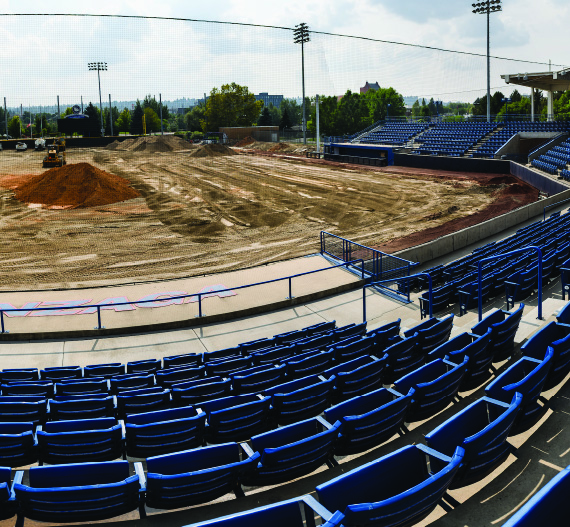Natural Grass a Thing of the Past; Artificial Turf Increases Playability

Coach Steve Hertz Field at Patterson Baseball Complex is receiving a facelift. Excavators have scraped the old natural grass and clay “face” off the surface and will soon be replacing it with artificial turf.
Baseball purists and Zags who have passed might be turning in their graves. But Athletics administrators and baseball coaches agree this is a change for the good, says Rob Kavon, associate athletic director for facilities and events operations. “It’s a playability issue,” Kavon explains.
The turf will cover all areas of the field, including the infield, pitching mound and batter’s box. It will drain easily and can be plowed of snow, something that was impossible on natural grass
This turf is the same as on Mulligan Field except that the small rubber pellets on Mulligan will be replaced on Hertz Field with sand, giving a batted ball a more natural bounce
Maintenance is another key issue: The new surface will not require fertilizer, mowing or striping. “It will require sweeping with a special machine to raise the fibers.
Washington State, Washington, Oregon, Oregon State and Whitworth already use turf, and reports are good. This surface is also gaining popularity in the SEC, where rain can play havoc with their fields.
Kavon reports a few other stadium changes
- Grass berms beyond the left and right field lines are being flattened to add bleacher seating should Gonzaga be granted an NCAA regional sit
- Left and right field side fences lining the sides of the field will be closer to the field to allow bullpens to be moved behind the fence
- The left field wall will increase from 8 to 12 feet “to make it a little more challenging for hitters to hit home runs there,” Kavon says.
Gonzaga baseball is conducting its fall practices at Whitworth for six weeks as the NCAA Division III Pirates only are allowed two weeks for fall ball.
